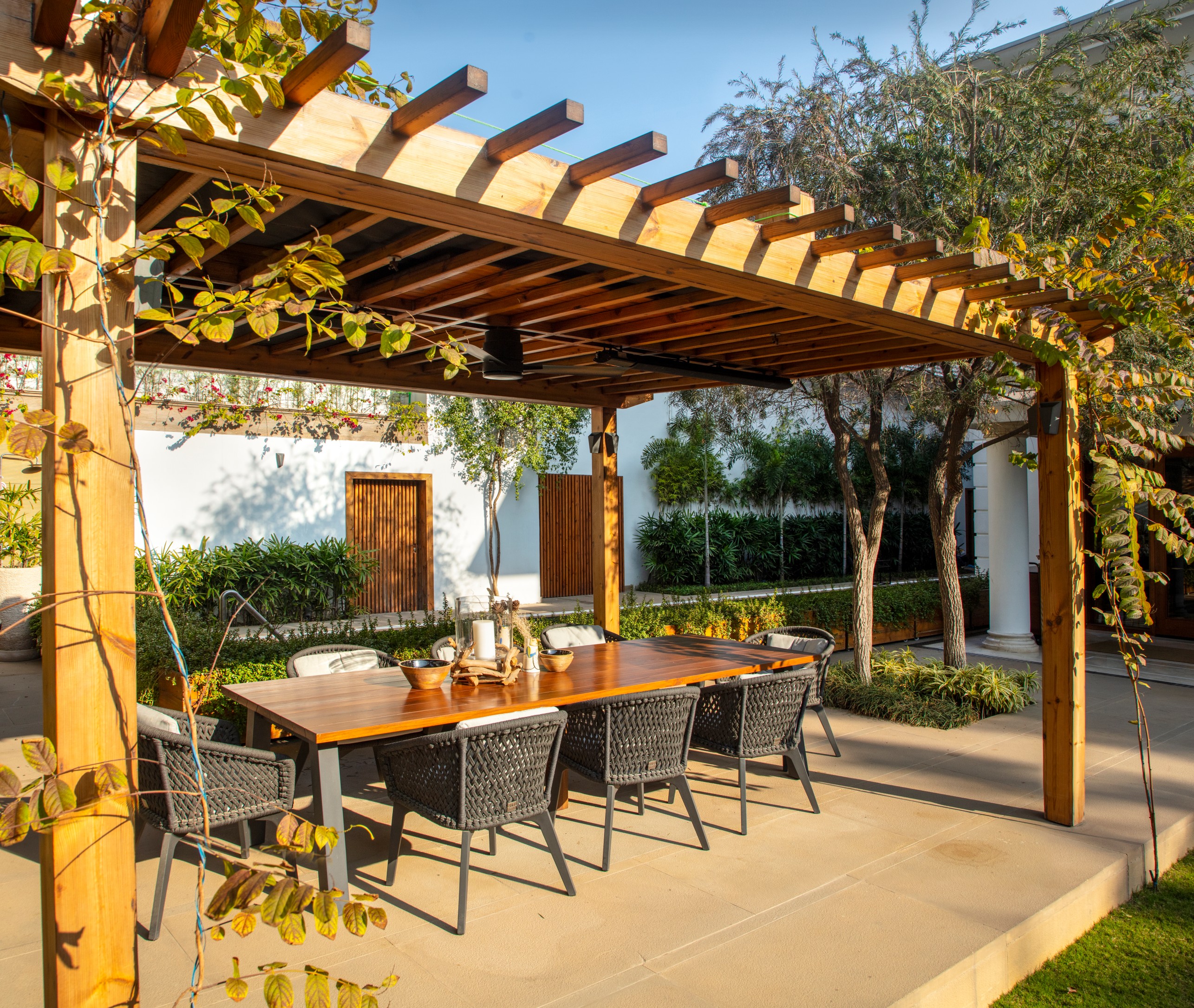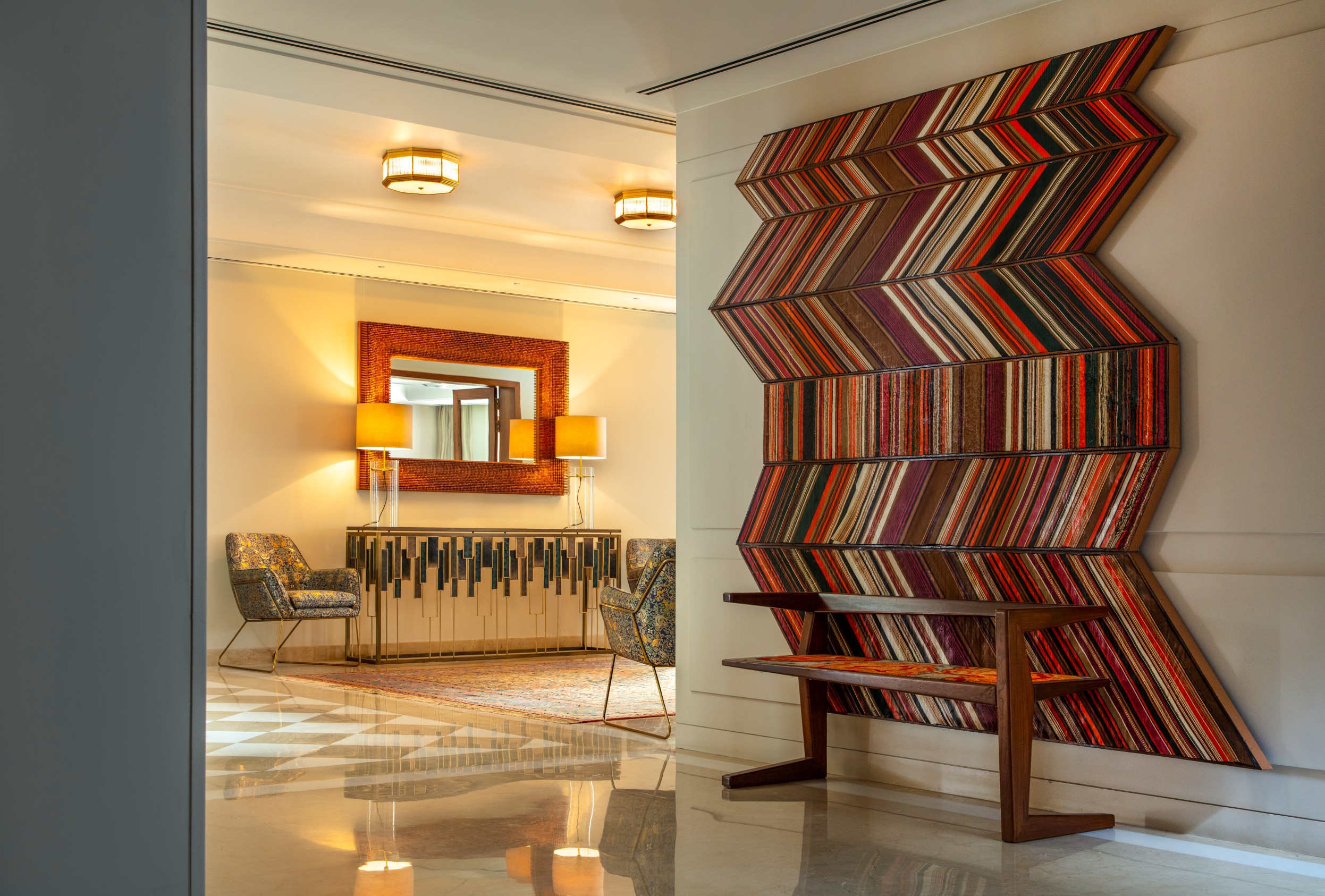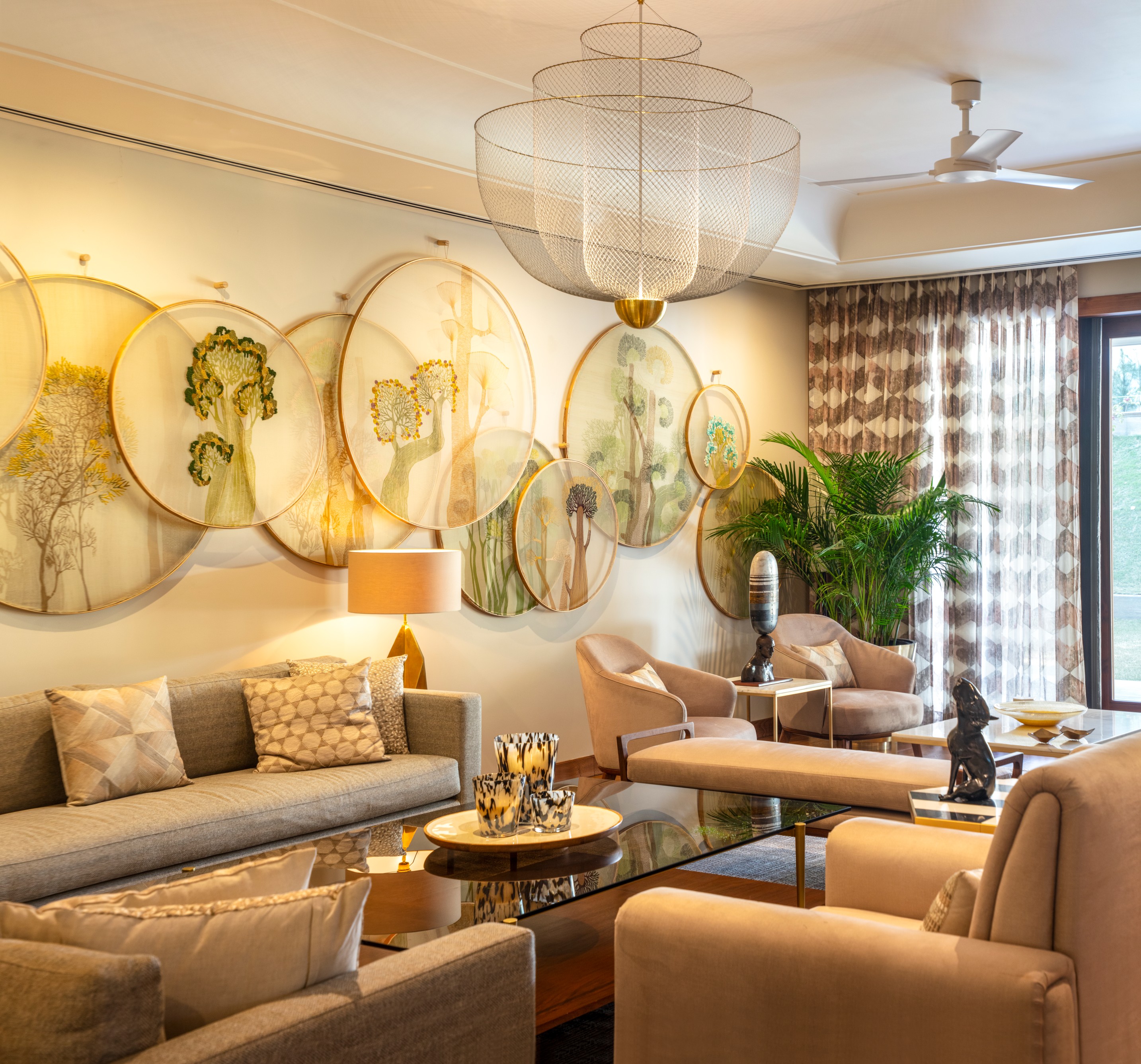Private Residence in Lutyens’ Delhi, Studio Lotus Principals: Des. Ambrish Arora, Ar. Sidhartha Talwar, Des. Ankur Choksi, Des. Asha Sairam and Ar. Harsh Vardhan
Located in New Delhi, the Lutyens’ Bungalow Zone is famed for its Indo-European architectural ideals featuring sprawling manicured gardens, tree-lined avenues and stately buildings reminiscent of the capital’s colonial past. A privately-owned property in this neighborhood is remodeled into a contemporary single-family residence.
The client wanted minimum alteration to the original neo-classical look while converting the original structure into a private residence. The major constraints were to accommodate new functions within the existing blueprint, which required revitalizing dead pockets and reconfiguring the circulation to optimize the home’s expansive proportions. The scale of the spaces are reduced, and the functions redistributed to create a welcoming and intimate quality. Spanning 13,000 sq. ft., the residence is flanked by expansive lawns on the front and rear. A driveway approaches a restored entry porch from the southern periphery; having been reshaped to enhance circulation and integrate green pockets with the entrance. Deep verandahs and Doric columns punctuate the built envelope and are seamlessly connected to the interiors with operable fenestrations which replace the fixed glass panels. The layout segregates public and private spaces over two levels, with internal structural modifications enhancing the functional quality of spaces and infusing light and ventilation. This is achieved by shifting walls, reconfiguring ceiling levels and reorganizing entrances for different levels of privacy. On the ground floor, public zones such as a meeting area and a formal lounge flank the foyer. A study abutting the lounge doubles as a home office with sliding pocket doors for flexible spatial integration.

The living room is carved out by extending a former board room and integrating it into a former corridor, and the eastern wing features the dining area overlooking a swimming pool and a garden. Art Deco references such as brass and frosted glass partitions and brass-accented furniture and lighting fixtures are used. The upper floor is accessed by a staircase and a lift at the far end of the east-west corridor. The former quadrant division on the floor is replaced by a linear passage leading to a pooja altar in a niche; daylight streams in through the skylights, and a small cut-out in the center visually connects this space to the ground floor. Private rooms align with the central corridor, with the master bedroom at one end opening out onto a private verandah that is framed by a dense grove of large trees in front of the house. The other end has his and her walk-in closets with respective en suite bathrooms. A family den with an informal dining room is connected to the server on the ground floor by a dumbwaiter and a service staircase. The family room opens out onto a terrace facing the rear lawn, flanked by children’s bedrooms with attached play areas. The upper floor includes a massage room, a pantry and nanny rooms along the corridor’s eastern edge also accessed from the service staircase

Landscape interventions by Aditya Advani of ROHA Landscape revitalize the sparingly-used areas of the beautiful outdoors, integrating them within the overall design scheme. Outdoor decks shaded by timber pergolas, are added to the garden to optimize the usability of the swimming pool; and allow the rear lawn to accommodate formal and informal events, which are accessible through the garden. Throughout the design and construction process, there is a conscious effort to reduce material wastage and reuse materials such as timber doors and window frames, and the existing hard finishes and civil elements. Beige and cream marble flooring on the ground floor is preserved, a number of false ceilings are retained and modified for new use, and existing frames and doors are upcycled and integrated into the new scheme. A similar design approach carries through to the handling of the bespoke furniture, furnishings and millwork by Mangrove Collective. Several heirloom furniture pieces from the client’s former home are refurbished and integrated into the new scheme developed by Mangrove for the home. The home features paintings, sculptures and art installations representing the clients’ liking for art and understated luxury. The foyer features a bespoke mirror by Filipino artist Vito Selma, a bench by Rooshad Shroff, a woodcut installation by renowned artist Kumaresan Selvaraj and artwork by Gunjan Kumar. Flanking the foyer are additional artworks by Manjunath Kamath and Sumedh Rajendra, and the twin-headed sculpture centrepiece is by South African artist Lionel Smit.

The highlight of the living area is a textile installation with hand-embroidered woodcut prints on silk by Dhvani Behl of Flora For Fauna. The dining room has twin artworks by a mother-daughter artist duo, Shanti Bai and Mangla Bai, sourced from Tribal Art Forms, a collective run by Mandira Lamba. The verandahs feature installations by Jop Kunneke and the Man & Bicycle and are in collaboration with Pomegranate Design for the charity Khushii.


